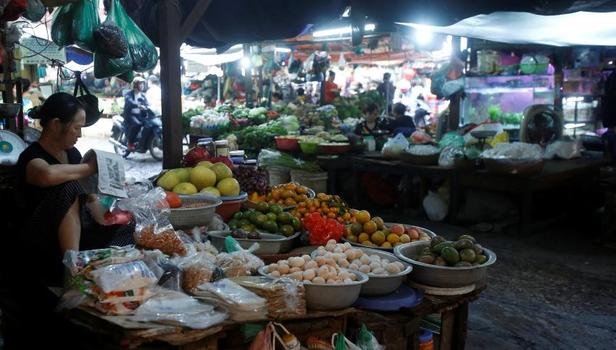Retail Inflation rises to 3.65% in February
15 Mar 2017 ( IBTN News Bureau )
Retail inflation in India rose to 3.65 percent in February 2017, marginally higher than a month ago, showed data released by the government on Tuesday.
The increase in the consumer price index was in line with a poll of economists conducted by Bloomberg, which pegged inflation at 3.6 percent in February compared to 3.17 percent in January.
Retail inflation has been heading lower and hit a series-low in January. The decline stemmed mainly from the moderation in food inflation, especially in perishables, which were impacted by demonetisation. However, inflation excluding food and fuel (also known as core inflation) has remained sticky.
Data released on Tuesday showed that the decline in food prices is starting to reverse, pushing up headline inflation.
- Food prices rose 2.01 percent in February vs 0.61 percent in January
- Food and beverage prices rose 2.46 percent
- Fuel and lighting inflation increased 3.9 percent
- Clothing and footwear prices increased 4.3 percent
While retail inflation remains in check, wholesale prices surged in February due to higher commodity prices. Wholesale price index (WPI) based inflation rose 6.55 percent in February to its highest level in over three years. The divergence in the WPI and CPI indices widened to nearly 300 basis points in February.
The RBI warned of an increase in inflation pressures, partly due to an unfavourable base effect in a report on the macroeconomic impact of demonetisation released on Friday. The RBI saw upside risks to inflation as demand recovers in the latter part of the fourth quarter of fiscal 2017.
It added that the outcome of headline inflation in the near term will depend on “how food price dynamics evolve.”
The central bank had also raised concerns about core inflation at its last policy review in February, when it kept interest rates steady. This was cited as a key reason for the shift in the central bank’s stance from accommodative to neutral. While the RBI will likely meet its target of bringing down retail inflation to below 5 percent by March 2017, its medium term objective of 4 percent inflation remains in doubt.
The International Monetary Fund expects inflation to be at around 4.75 percent, “due to temporary demand disruptions and increased monsoon-driven food supplies” in early 2017. The multinational agency cited “supply-side reforms, particularly in agriculture, continued fiscal consolidation, and relieving impediments to monetary transmission” as factors crucial to keeping inflation in check, in its Article IV consultation paper on India released last month.
(Click here for Android APP of IBTN. You can follow us on facebook and Twitter)
Share This News
About sharing
-
 16 Sep 2025
UN inquiry finds Israel’s war on Gaza to be genocide
16 Sep 2025
UN inquiry finds Israel’s war on Gaza to be genocide
UN inquiry finds Israel’s war on Gaza to be genocide
-
 16 May 2025
Has Donald Trump taken US-Gulf relations to a new era?
16 May 2025
Has Donald Trump taken US-Gulf relations to a new era?
Has Donald Trump taken US-Gulf relations to a new era?
May 16, 2...
-
 16 May 2025
What do the Gulf states gain from the US president's historic trip to the region?
16 May 2025
What do the Gulf states gain from the US president's historic trip to the region?
What do the Gulf states gain from the US president's historic trip to the regio...
-
 15 May 2025
Pakistan FM: US didn't force the ceasefire with India | Talk to Al Jazeera
15 May 2025
Pakistan FM: US didn't force the ceasefire with India | Talk to Al Jazeera
Pakistan FM: US didn't force the ceasefire with India | Talk to Al Jazeera
-
 15 May 2025
How will the lifting of US sanctions help Syrians rebuild their country?
15 May 2025
How will the lifting of US sanctions help Syrians rebuild their country?
How will the lifting of US sanctions help Syrians rebuild their country?



